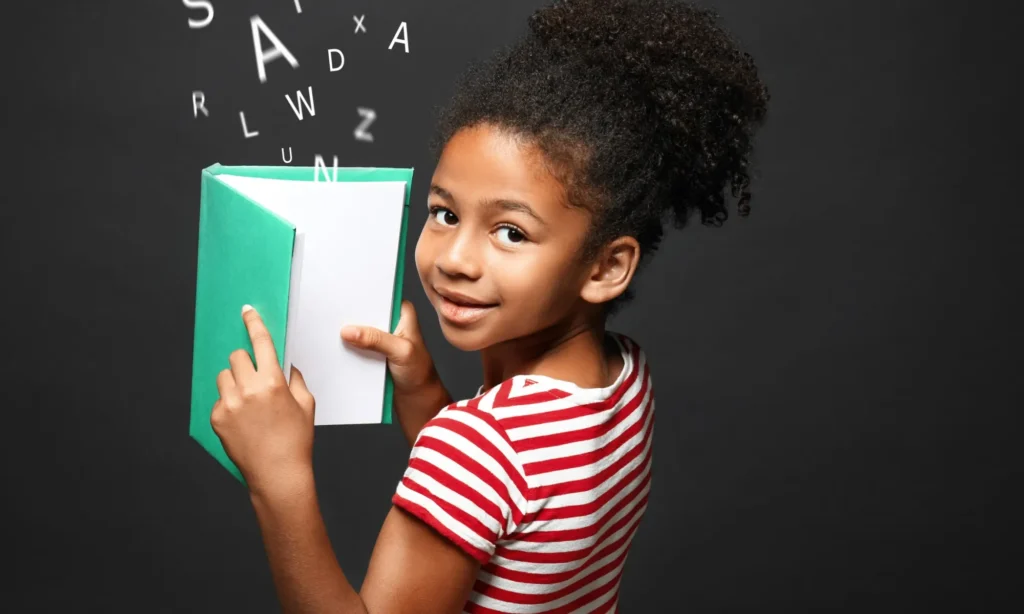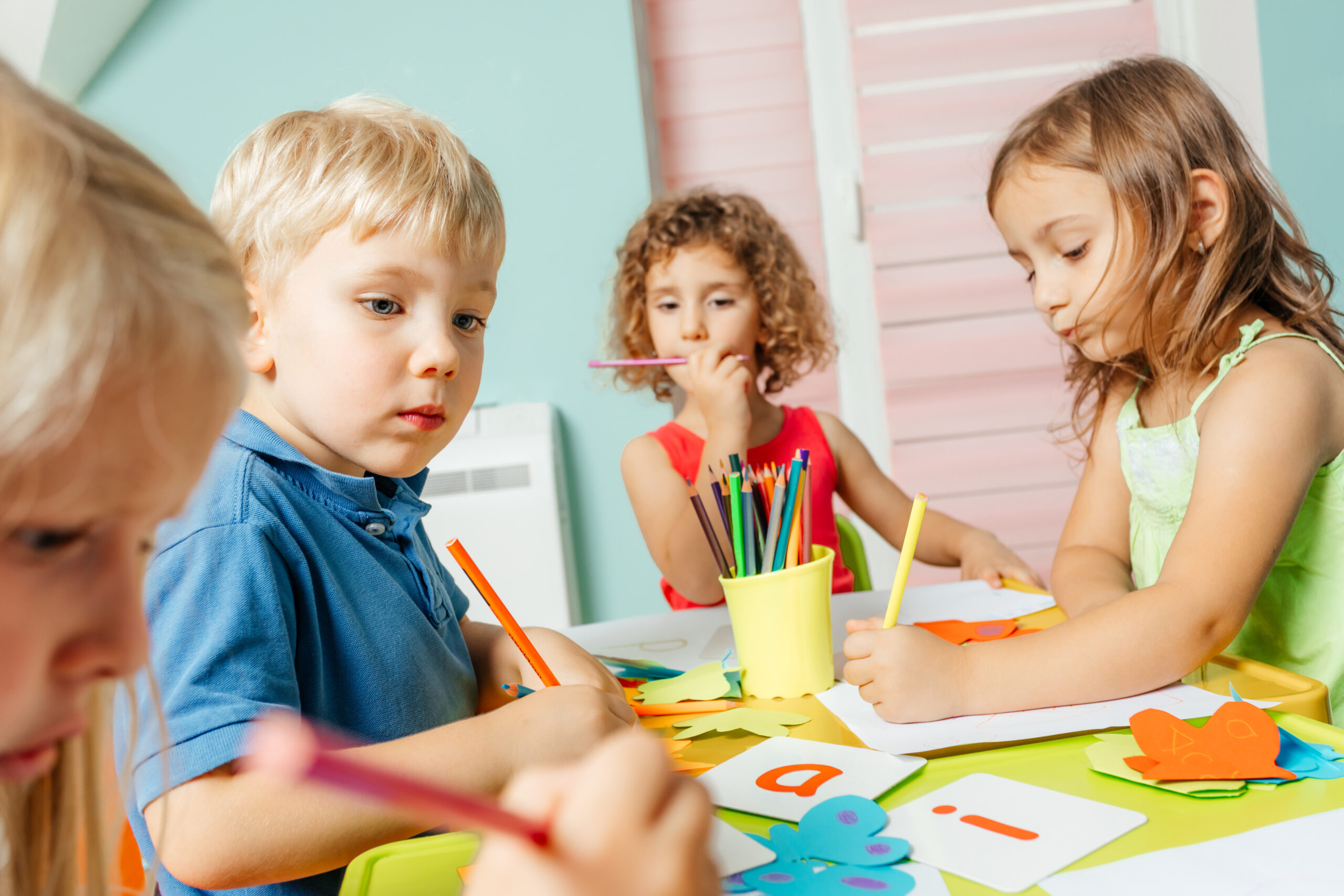- Why do we need the alphabet?
- When to start learning?
- Wow, letters look the same!
- How to write? To the right or the left? Up or down?
- What is in the end?
Many people believe that learning English is impossible without an aspect such as reading, i.e. mastering communication skills is just for fun. But as soon as parents start learning letters with children, the learning is immediately reorganised more seriously. Is it true? Let us look at this in more details.
Why do we need the alphabet?
Myth #1. Children need the English alphabet to read and write in English
This fact requires no proof– one needs to know the alphabet to read and write. Be ready to be extremely surprised and even shocked because to read and write you do not necessarily need to know the alphabet!
“An alphabet is a set of all the letters of a given writing system, arranged in a certain, generally accepted order.’’
How is it possible? Very simple. An alphabet is just a sequence of letters; knowing letters, unfortunately, will not help you learn to read! Don’t believe it? Try it yourself. Take the most remarkable letter of the English alphabet – “W”. How many English words come to your mind that start with [‘d?blju:]? And what about “J” [?ei]? Or the most mysterious letter “H” [eit?]? Have you done it? You immediately remember the image of the letter, but not its official, alphabetical name or the sound that this letter stands for.
And that’s the whole point! To be able to read, you need to know the sounds of the English alphabet and the letter image that we see when reading or remember when we want to write something. In English, this is called phonics.
So why make children learn the English alphabet? The only thing you need it for is to be able to spell your first name, last name, address or email address. In English, this is called “spelling”. Well, you also need to know the alphabet to find words in alphabetical order, for example, in a dictionary. However, paper dictionaries are now out of fashion completely, and electronic ones have an automatic search. So…
When to start learning?
Myth #2. First, we learn to read in our native language, then – in English.
Many parents believe that you should not start learning the English alphabet before the 2nd grade, as native letters still constitute a problem. And we are 100% sure that starting to learn the alphabet in the 2nd grade is already too late ? If a child wants to learn English letters at the age of 5, you should let him or her do it in any case! But it is better to use phonics bit by bit. Let us figure it out.
As you know, a language can be oral and written, and the natural way of mastering the native language is from mastering oral form to gradually getting acquainted with its written one. Interest in letters, or rather their writing, awakens in children quite early. Children like to “copy” letters without thinking of their sounds but at the same time feeling much older than they actually are. The same happens with English. It is one thing to know the words “dog” and “cat”, but it’s quite another to be able to write these words.
And here we face two problems.
Firstly, even those who have never studied English can say ABCDEFG by listening to an alphabet song several times. But to correlate the sound of ABCD with their written image…here you need to make some extra efforts! Therefore, in a student’s memory, the sounding image must necessarily be supported by a visual image, for example; we say [si:] – we write “Cc”, we say [bi:] – we write “Bb”. To do this, you can print cards or pictures with the alphabet, pronounce and repeat them.
Secondly, it’s not enough to know the alphabet; you also need to understand that [bi:] – Bb is [b], and [si:] – Cc is… [k]! We do not even mention “Hh” – [h]. In conclusion, it is necessary to know that the correctly written word “dog” consists of [di:] – [d] – Dd, [ou] – [?] – Oo, [?i:] – [?] – Gg!
The child is ready to read and write when sound-letter and letter-sound images are formed and fixed in his or her head. This process will take time and special exercises for memorising and practising the letters and sounds of the English language (find out more alphabet teaching tips in article abour english sounds and letters for children) because lightning-fast learned letters are just one of the success factors. Why?

Wow, letters look the same!
Myth #3. Children have an excellent memory. It is easy to learn 26 letters!
The English alphabet, indeed, has fewer letters than other languages. There are only 26 of them. And children have fantastic memory. If children listen to a song several times or watch a cartoon about the English alphabet, they will remember both the letter names and their order quite easily. It will take a little longer to remember how they are written. Here you can print the English alphabet as colouring pages, listen, colour and repeat. You can start learning the alphabet with those English letters that resemble the ones from your native language.
The advantages of learning the English alphabet at preschool age, plus the fact that children of 6-7 can gradually and slowly master the sounds and letters, is that they do not know their native written letters yet, so there will be a lesser negative influence of interference. But at first, students will often be confused because there are quite a lot of “semi-coincidences” – n, c, B, x, Pp, ?… If the sound-letter and letter-sound combinations are not learnt well, interference will affect both reading (e.g. an English letter is pronounced as a sound in your language) and writing (e.g. hearing a sound, but writing an “analog” in your language instead of an English letter).
How to write? To the right or the left? Up or down?
Myth #4. English letters are similar in writing; they are easy to remember
However, English letters have their own skeletons in the closet. First, they do have many “similar” pairs, those that differ only in their direction. For example, pairs of letters “t” and “f” and “M” and “W” are the same, with the only difference that they are “reflections” of each other. And, this is hard to believe, but children turn them upside down! And the pairs like “d”-”b” and, for example, “p”-”q” differ only in their direction, so children “mirror” them very often. At first, such confusion will also have a very unfavourable effect on reading and writing.
Of course, as time goes by, a student learns to control themself independently. But if at the stage of introducing and fixing the alphabet, these nuances are not taken into account and not prevented, the residual phenomena persist for a long time, become stable and are extremely difficult to correct. Online tools for learning the English alphabet, free alphabet videos, alphabet songs for kids with both letters and sounds, etc., can help, but…
What is in the end?
So, we have considered the most common myths about how “easy” it is for children to learn English letters. Yes, every child can learn the names and sequence of letters at home with their mother, or even independently, using cards, pictures, with transcription of English letters in native language letters, free songs, cartoons and exercises, which are now available on the Internet. But the consolidation of sound-letter combinations and formation of reading skills requires longer work, preferably with the help of experienced teachers.
And, if you want your children to learn English efficiently from the very beginning, Novakid Online English School for Children have prepared video lessons where teachers know how to “make friends” with English sounds and letters. Our teachers know how to do it in an interesting, informative, effective and, most importantly, high-quality way!







































